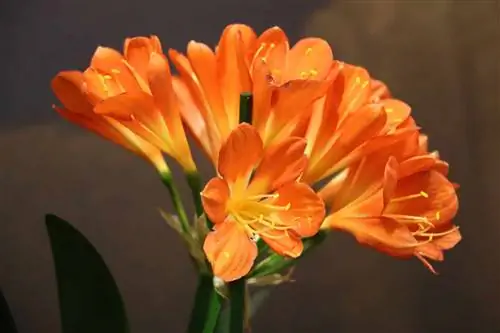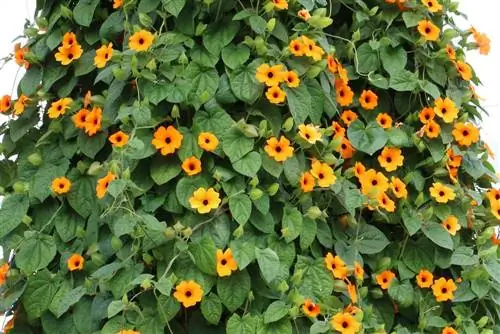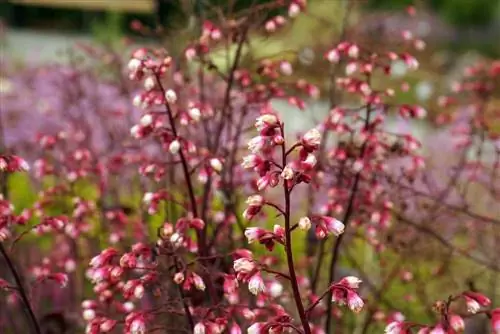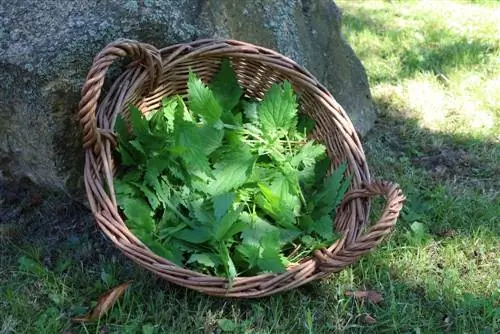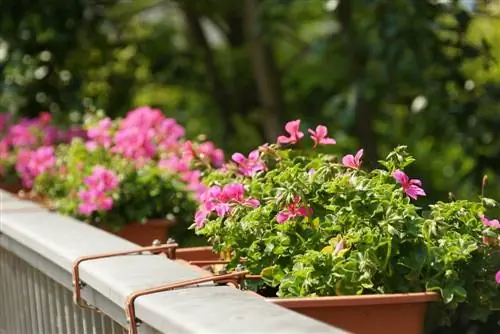- Author admin [email protected].
- Public 2023-12-17 03:39.
- Last modified 2025-06-01 06:48.
Behind the name “Bellis Perennis” lies the daisy, which is primarily known as a garden and meadow plant. This plant is a perennial. The daisy, which belongs to the asters, is also known as daisy and daisy. You can even keep what is probably the most famous plant in Central Europe yourself.
The daisy adapts well to the prevailing weather and environmental conditions and is widespread due to its low sensitivity. If you would like to plant the small plant yourself, you can enjoy a pretty and robust flower. Bellis Perennis does not require a specially prepared space and is content with simple soil; maintenance does not require much effort. The ease of cultivation of this plant makes it a suitable beginner plant for hobby gardeners.
Bellis Perennis - profile
- Botanical name: Bellis Perennis
- German name: Daisy
- Other names: custom-made sweethearts, daisies, monthly roses, eye flowers
- Meaning of the plant name: bellus means “pretty/beautiful”; perennis stands for “persistent”
- Appearance: flower stalk has no leaves; Petals and stem slightly hairy; yellow-white flower head; spatulate leaves
- Special features: forms a rosette of leaves above the ground
- Occurrence: common - meadows, forests, green areas in gardens, roadsides
- Soil: loamy, not too dry
- Flowering time: from February to December
- Height: variable from 3 to 15 cm
- Harvest: on a sunny day (use flowers while still fresh)
Correct location
The Bellis Perennis is an undemanding plant that adapts well to various weather conditions. Choose a sunny spot in the garden for sowing. If you cannot provide this, a partially shaded location will suffice. Of course, sowing is also possible in shady places, but you have to expect smaller flowers here.
Earth
Garden soil is sufficient for planting. Ideally, you can provide the plant with a nutritious and loamy messenger. However, simple garden soil provides the necessary breeding ground for he althy daisy growth. However, make sure that the soil does not have an acidic pH value. Tip: Enrich the soil with some compost.
Sowing
The time between March and July offers the best conditions for you to plant the eyeflowers directly in the garden soil. It is not necessary to sow in a pot beforehand, which simplifies sowing. You either place the seeds in designated places on the ground or scatter them widely over the ground and cover the seeds with just a little soil. Then press everything down a little, but not too hard, as the flowers need a lot of oxygen to grow. So that you have a better overview of the optimal sowing conditions - here is the information again in short form.
- ideal sowing time between March and July
- Place seeds directly in the garden soil (special soil is not necessary)
- Wide spreading possible
- Cover seeds with just a little soil
- Press the soil lightly
Care
Make sure the soil stays moist. If it has rained, you do not need to water until the soil is dry again. When planting in a pot or container, it is important to make sure that the drainage works well. If the water accumulates, the roots rot and the daisies die. You should also loosen the soil more often. If you want a longer flowering period, remove the withered flowers. Not only do you take care of the sweetheart, but you also prevent uncontrolled reproduction. They also help the plant to better absorb water. Caring for flowers is not very difficult. You only need to pay attention to a few points to keep the plants he althy:
- Keep soil moist, but not too wet
- When planting in pots and buckets, ensure good drainage to avoid waterlogging
- Loose the soil more often
- removing wilted flowers
Fertilize
If you want to fertilize your Bellis Perennis, it is best to do this during its growth phase. This is at the beginning of spring. Liquid fertilizer is very suitable for daisies. Put this in the ground every two weeks. You should avoid fertilizing in the winter months as the plants do not absorb the product during this time. The consequences are the same as with water stagnation: stagnant moisture and the associated rotting roots. Regular watering also helps to keep the plant he althy to avoid drought.
Tip:
If you have placed the seeds in a pot, place a glass plate over them to regulate the moisture balance.
Daisy species
Among the daisies, the blue version is a special eye-catcher. The plant, introduced to Europe from Australia, is suitable as an ornamental flower for balconies and gardens. The ideal location is exposed to sunlight for several hours a day. You can add a little sand to the loose soil. Like the normal representatives, you should ensure that the blue daisy has enough, but not excessive, moisture. Fertilize only a little. You should know that the blue daisy is not a winter-hardy plant, but it can be placed in a bright, cool place at temperatures between 5 and 15 ° C.
Another variety is the Habanera, which impresses with its flowers up to 6 cm in size. The dense bicolor flowers feature a red tip on the otherwise white leaves. The care is no different from the other daisies and the same conditions are required. The red pomponette has smaller flowers, the diameter of which is about 3 cm. You can create beautiful accents with this colorful plant, especially among the white Bellis Perennis. The red variety also has no special care requirements and must be cared for like all other daisies.
Diseases
Daisies are easy to care for and robust. Dangers that exist for plants come from pests, for example aphids and spider mites. In addition, mildew can pose a danger. You can spray aphids off the plants. Chemical substances help combat severe infestations. Webs on the leaf axils indicate spider mites. You can get rid of the pests with sulfur. It also helps to remove the infected plants. The dangers for daisies listed again:
- Aphids
- Spider mites
- Mildew
- Combat by spraying or chemical substances
- If necessary, remove infected plants to prevent attacks on neighboring plants
Frequently asked questions
The daisy doesn't grow. What can help?
Control the amount of water. The earth must not be dried out. Too much liquid is also not good.
Do you have to fertilize Bellis Perennis?
Daisies are undemanding plants that do not necessarily need to be fertilized. However, good fertilizer supports growth. It is best to use a liquid fertilizer that you add every two weeks. However, avoid fertilizing in winter.
What you should know about daisies in brief
Peculiarities
- The daisy flowers close at night and in bad weather.
- Cultivated varieties such as the blue daisy are often double and much larger than normal daisies.
- They are used for beds and not for meadows. They are suitable for bed borders, for planting flower bulbs and for balcony boxes.
- You can use the flowers and leaves of the daisy as a salad.
Care
- Daisies like a sunny to partially shaded location and moist, nutritious soil. Clay soil is ideal.
- They hardly need any additional watering and can get along without fertilizer.
- Cultivars should be watered every now and then. They are a little more demanding.
- Daisies reproduce on their own in the garden, but can also be propagated by division and sowing.
Daisies as a medicinal plant
As a homeopathic remedy, Bellis Perennis is a remedy that helps with a variety of he alth problems. The tubular flowers contain saponins, essential oils, bitter substances, tannins and mucus. The apigenin-7 glucoside cosmosiin was detected in the flowers. The leaves and, in some products, the roots are also used. Bellis Perennis is usually used in low potency.
The ingredients have a draining and blood-purifying effect. The remedy is used for skin diseases and liver diseases. Due to its diuretic effect, it is used in spring cures and also as a rheumatism remedy. The remedy has proven particularly useful for acne and eczema and for injuries to the outer skin, such as inflamed scratches. The area of application also includes blunt injuries, bruises, sprains and bruises, normal respiratory diseases and gynecological problems. The remedy is used to treat the consequences of overexertion and injuries.
Tea made from the flowers is used. They are ideal for respiratory diseases. Only flowers are used for the teas. Take 2 teaspoons of flowers and pour boiling water over them. After 10 minutes you strain and can then drink the tea.
Otherwise, tinctures are common, but there are also tablets and ointments. Tinctures can be used internally and externally. The flowers and high-proof alcohol are used to make it. The whole thing has to sit in a tightly closed jar for two to six weeks. Then it is strained and poured into a dark container. Do not use more than 10 to 50 drops daily.
Tip:
The best time to collect the flowers or other leaf parts is from April to September.


